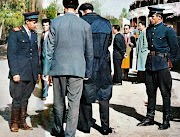November 29, 1944: Courage and Sacrifice for Freedom
Albanian Chronicles Diary
November 29, 1944
On November 29, 1944, Albania celebrated its liberation from the Nazi-Fascist occupation. The sacrifices of an entire people finally made sense. Triumphant partisans entered liberated Tirana. Albania was turning a page, and a new era was beginning, though it would be marked by repression and dictatorship. But on that day, such thoughts were set aside: it was a time of celebration. Liberation represented just the first step along a difficult path filled with future challenges.
In the context of World War II, Albanian partisans fought with extraordinary determination against the German occupation. The mountains surrounding Tirana became the stage for fierce battles. Cities and villages were devastated: bridges destroyed, buildings razed, and roads reduced to rubble. The attempt to consolidate German control through a pro-German national committee failed in the face of the determination of the Albanian people and the leadership of the partisans.
The National Liberation Army marches in Tirana after the liberation of Albania on November 29, 1944.
The liberation of Albania was the culmination of years of resistance and sacrifice. The civilian population supported the partisans by providing safe shelters and essential resources. Women and the elderly, who remained in the villages, ensured the social fabric's survival by caring for families and fields. The inaccessible mountains allowed the partisans to organize and strike strategically.
This liberation was not only a military victory but also a symbol of national unity and collective sacrifice. The partisans, often from the most humble backgrounds, demonstrated extraordinary resilience, finding support within rural communities. This spirit of sacrifice was the true driving force of the liberation movement.
During the Italian and German occupations, Germany attempted to establish a collaborationist regime through a National Committee that formally declared independence from Italy but was, in fact, merely a tool of control. The partisan resistance did not relent, and the national movement, in coordination with other resistance movements in the Balkans, continued the struggle until complete liberation.
Tirana became the symbol of this rebirth. The modern districts built during the Italian occupation survived the fighting and became the center of the new era. On the evening of November 29, 1944, a celebratory parade brought together Albanian society: members of the National Liberation Army, families of the fallen, and young women soldiers. For a brief moment, the nation gave itself over to collective joy, without dwelling on the uncertainties of the future. The celebration was an occasion to honor the courage of those who had sacrificed their lives, and the presence of women soldiers demonstrated how the partisan movement represented all segments of society.
Survivors' accounts describe a weary but resolute people. Veterans' stories speak of battles fought not only with weapons but also with hope for a better future. The partisans fought not only to free their land but also to build a more just society—a vision that fueled the resistance through the darkest moments.
Lovett F. Edwards, in the article "The New Albania" published in 'The Geographical Magazine' in 1945, highlighted how the partisan resistance was also a struggle for social justice and agrarian reform. The call of "land to those who work it" became the core of the peasants' inspiration, ensuring the success of the partisan movement. Edwards described how the support of the peasants for the reforms was crucial to the consolidation of the nascent Albanian state. The peasants saw in the partisan struggle a concrete possibility for redemption and justice.
Many peasants voluntarily joined the partisan forces, hoping to see the dream of a free land realized. Their contribution extended beyond logistical support and the provision of resources; it also involved direct participation in the battles, making the liberation movement a true social revolution.
That November 29 marked a fundamental turning point for Albania. Although the date became politically divisive after the fall of the communist regime, the sacrifice of those who fought has not been forgotten. Today, despite disputes, the memory of that day remains alive, celebrated as Liberation Day—a moment when the Albanian people took their destiny into their own hands. The echo of that liberation still resonates in today's celebrations, in the stories passed down through generations, and in the monuments that honor the sacrifice of the partisans. The memory of that day is an integral part of the national identity, a symbol of courage and unity that continues to inspire the Albanian people.










0 Comments